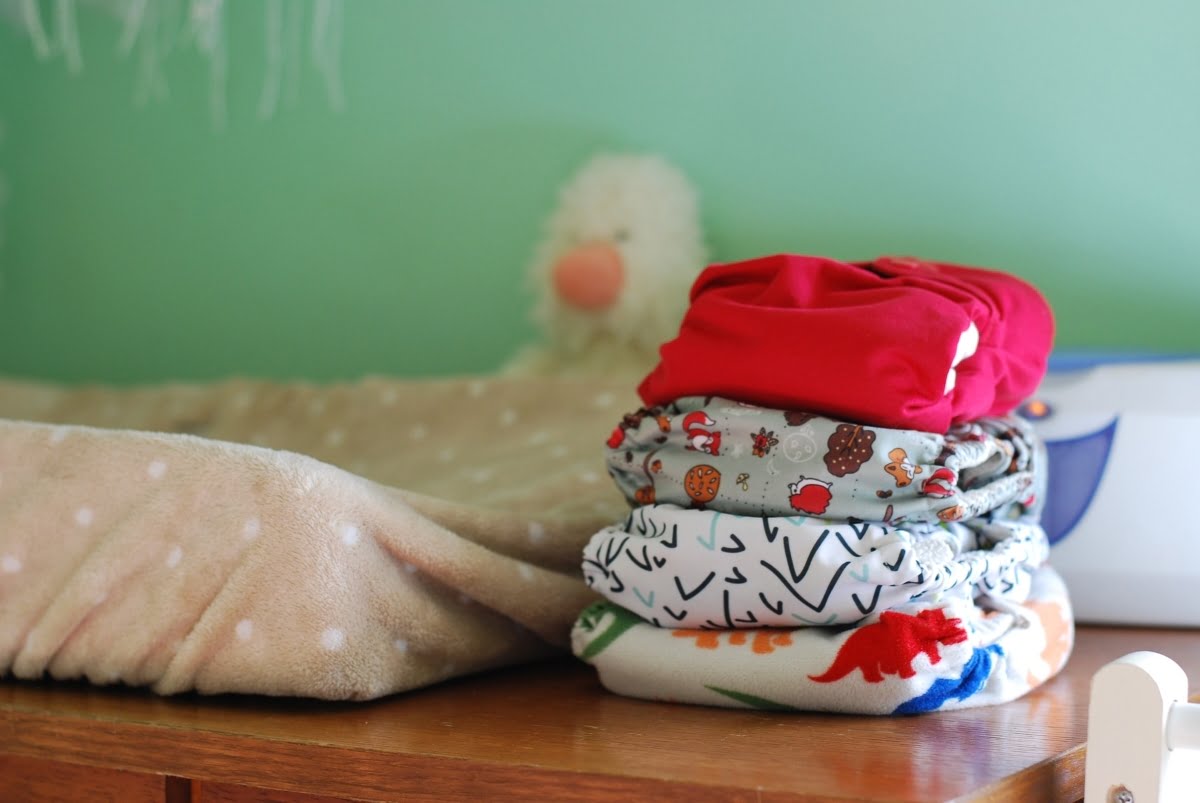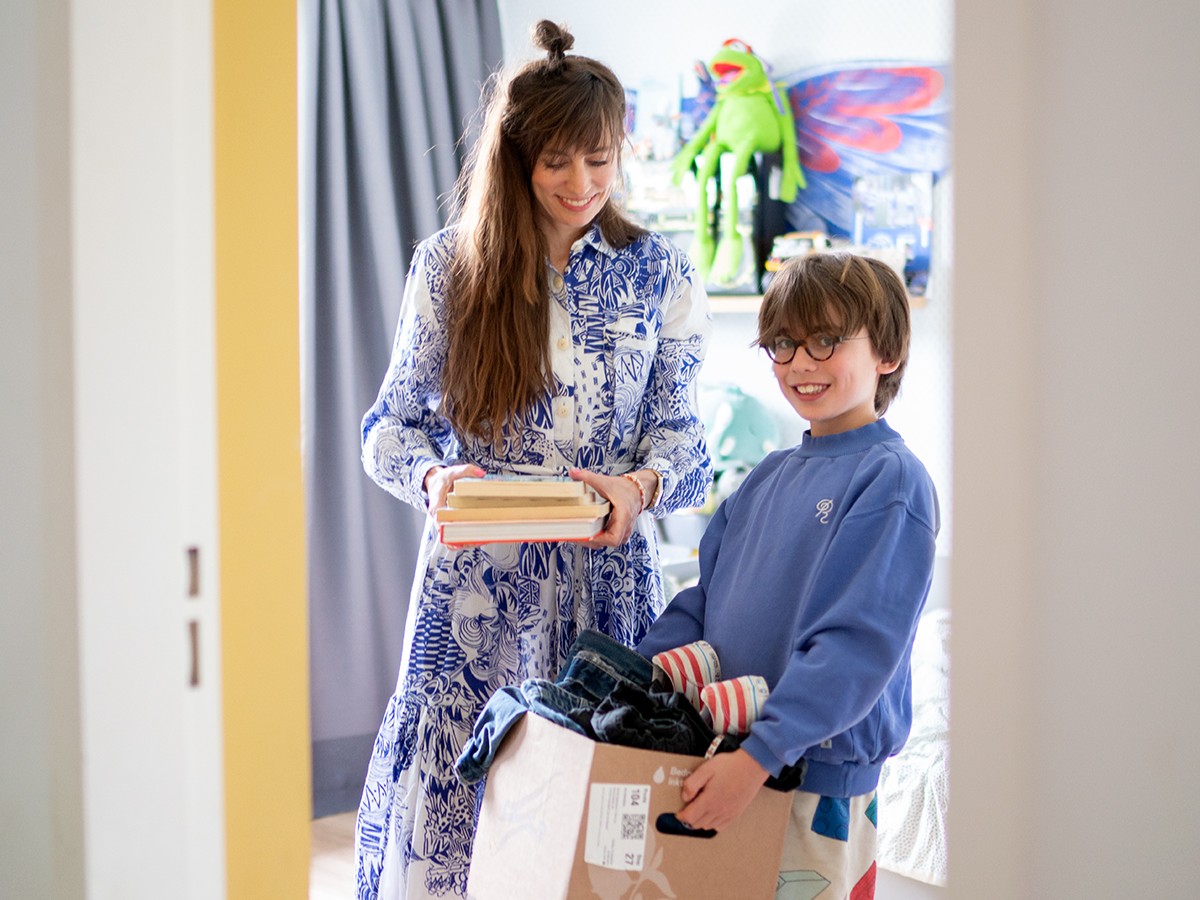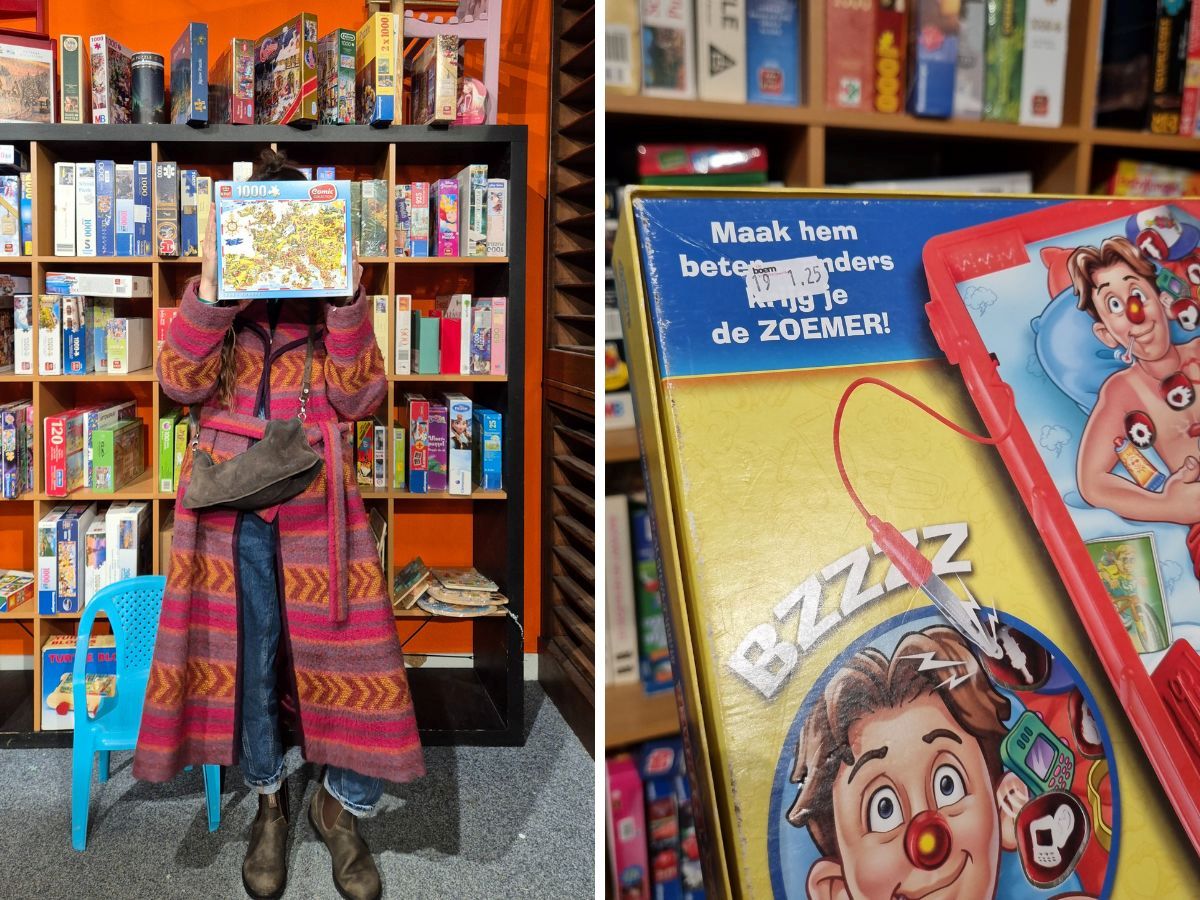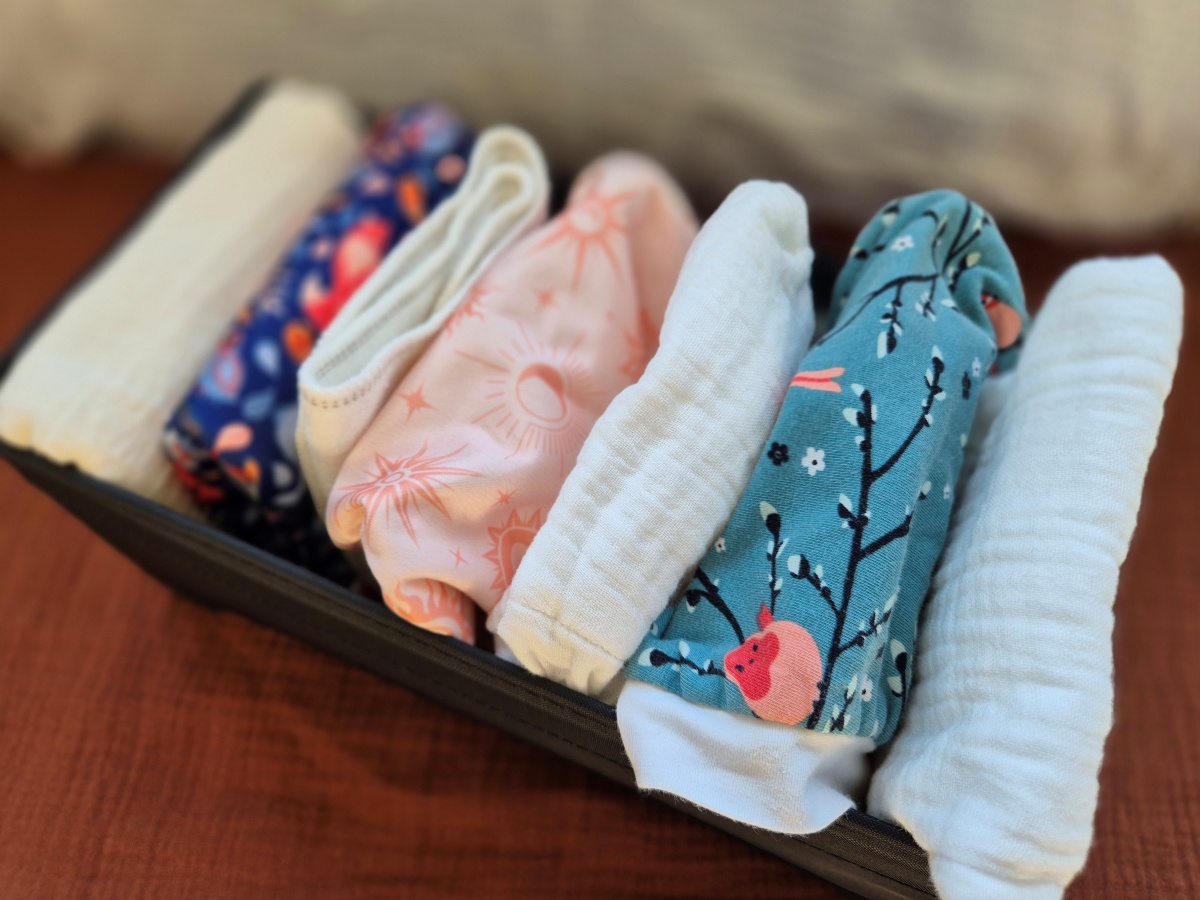Are you expecting or have a small child and would like to start using washable nappies? Then you must have noticed that there are many different types of washable nappies. So many that you probably can't see the wood for the trees. Where do you get the right information and which system of washable nappy best suits your needs? In this article, Kirsten - washable nappy consultant - not only finds out what systems of washable nappies there are, she also figures out which type of washable nappy is the most sustainable.
Different types of washable nappies: more than a hydrophilic cloth with safety pin
Washable nappies are becoming increasingly popular. They have long ceased to be hydrophilic cloths with safety pins. You have beautiful washable nappies these days, complete with the hippest prints. Not only is the demand for washable nappies increasing, but the supply is also growing. If you are new to the world of washable nappies, it can be difficult to make a choice. Which type of washable nappy should you start with? And are all types of washable nappies equally sustainable? I looked into it for you.
Why choose washable nappies?
According to Milieu Centraal, you save as much as 25 kilos of waste per month with washable nappies! If you wash in an economical way, washable nappies are also generally a lot more sustainable than disposable nappies. You can do this, for example, by only running full washing machines and not using a dryer. If you want to know whether using washable nappies in your case is also more sustainable and how to wash wash washable nappies in an energy-efficient way: first read this article on The negative impact of washable and disposable nappies.
Saving money with washable nappies: the investment is worth it
The high purchase price stops some people from using washable nappies. A complete good-quality set costs around a thousand euros. This set can last the entire nappy period and usually easily last a second round. Depending on the system and brand of washable nappies, it can be slightly more expensive or cheaper. Of course, you can also choose to buy (some of it) second-hand. Despite the high purchase price, washable nappies were also a lot cheaper than disposable nappies, over the whole lifetime. According to figures from 2021 from Milieu Centraal, you save around five hundred euros per child with washable nappies. Unfortunately, higher energy prices do reduce this difference. However, this is a good reason to study the different systems well in advance. Not every system is equally expensive and you don't have the same amount of laundry with every system. So not only is it sustainable to choose a low-wash system, but it can also save you quite a bit in your wallet over the years.
Systems washable nappies
You have chosen to start using washable nappies, but have no idea where to start? Here you can read in advance which types of washable nappies there are and what the differences are in the amount of washing and lifespan:
Two-piece system
Overpants
A two-piece system consists of a waterproof cover and an absorbent inner part. As these two parts are not attached to each other, you can use the pants several times and do not have to wash them every time. There are many different types and sizes pads. The most commonly used materials for overpants are PUL (polyurethane laminate) and wool. You can read more about wool overpants in this article.


In the left picture, you can see different types and sizes of overpants: the top ones made of PUL and the bottom ones made of wool.
Absorbent inner part
There are several options for the absorbent inner part. Especially for newborn babies, it is fine to use a cotton hydrophilic cloth or prefold use. This is not only cheap, but also saves you a lot of laundry. Moreover, hydrophilic cloths and prefolds dry quickly. The same goes for bow nappies, although these are a little trickier to use and less suitable for agile babies.
Alternatively, a preformed nappy as an absorbent inner part. A preformed nappy has Velcro or snap fasteners and is put on like a normal nappy (with the only difference that you still have to cover it with waterproof pants). A preformed nappy has slightly more volume than a prefold or hydrophilic cloth. Hence, it also absorbs more moisture and you don't have to change it as often. The combination of a prefold nappy with overpants, is the most leak-proof variant available. If you have a nappy that fits well, this system will (almost) never leak anything. So it is ideal for babies who urinate a lot or often suffer from squirting nappies. I myself had such a baby with squirting nappies. With disposable nappies, the poo would often be up to her neck, but with a preformed washable nappy with a matching cover, we no longer had this problem and even the clothes stayed clean. Because a pre-shaped nappy is slightly larger, you will have a bit more washing and drying takes a bit longer. Although that does depend on the type of nappy. At home, for example, we use the hu-da cotton nappies. These dry relatively quickly and fall slim.


Left: a hydrophilic cloth you can easily fold into a nappy, in the middle two pre-made nappies and on the right different types of inserts. Right: an insert from a Snap-in-One nappy.
Snap-in-One
A Snap-in-One nappy is similar to a two-piece system. In this case, you have an insert that you can attach to the overpants with a press stud. This makes it easy to prepare the nappy for babysitters, for example. The advantages are the same as with a two-piece system: you have relatively little laundry because you don't have to wash the pants every time. As a result, the pants also last longer. Moreover, as with a two-piece system, you have the advantage that you can use the pants and the insert separately. Great durability.
All-in-One
The name says it all: all in one. In an All-in-One nappy, the waterproof cover is attached to the absorbent inside. This type of washable nappy is most similar to a disposable nappy and is the easiest to use. The disadvantage of this nappy is that you have to wash the whole nappy each time. Also, an All-in-One usually doesn't absorb as well as a two-piece system with a pre-shaped nappy, so you will have to change more often. So with an All-in-One, you will have more laundry than with a two-piece system. Another disadvantage: if the outer part leaks, the nappy is no longer of any use (at most, you can cut out the absorbent part to use as an insert). So this nappy is the least durable. All-in-Ones can be handy for use at babysitters or childcare centres, though.


Two All-in-One nappies on the left and two pocket nappies on the right.
Pocket nappy
A pocket nappy is a waterproof pants with a layer of fabric sewn on the inside. Between these layers is a pocket where you can put different absorbent inserts. The advantage (compared to an All-in-One nappy) is that you can easily adjust the absorbency. A disadvantage is that it is a bit more work. Because the layer of fabric is attached to the overpants, you still have to put the whole nappy in the wash. Also, the nappy is no longer of any use if the outside gets leaked. You can then only use the insert. So a pocket nappy is also less durable than a two-piece system or Snap-in-One. Like All-in-Ones, pocket nappies are handy for use at babysitters or childcare centres because you can prepare them at home and they are almost as easy to put on afterwards as a disposable nappy. When your child is a bit bigger, pocket nappies without inserts are also handy as practice pants. At one point, my eldest daughter no longer wanted to wear a nappy, but she was not yet fully potty-trained. Fortunately, she was happy with a ‘special pants’ (read: pocket nappy without inserts) and that saved me a lot of laundry.
Which type of washable nappy is the most sustainable?
Now that you know about the different types of washable nappies, you might be wondering which system of washable nappies is the most sustainable. For this, we must first look at the impact of washable nappies. The impact of disposable nappies is mainly in the production process. With washable nappies, the impact is mainly in the washing of the nappies, i.e. during the use phase.
Which types of washable nappies do you have the least amount of laundry with?
The biggest environmental impact of washable nappies is in washing. You have the least amount of washing with a two-piece or Snap-in-One system, because you can use the pants several times and only have to wash the absorbent part. There are different options for the absorbent part. The least amount of washing is done with a hydrophilic cloth or prefold. These also dry the fastest: so you need fewer nappies in total and no dryer. So this is the most sustainable option. But beware: this is only true if this system works for your baby. Does your baby urinate a lot or have frequent squirting nappies? Then this system might leak more often and you might still have more laundry because you have to wash your baby's clothes more often. In that case, opt for a pre-shaped nappy as the absorbent part. Then you will have a bit more laundry from the nappies, but less for the clothes. Want to know how you wash wash washable nappies exactly? In this article, we explain step by step how best to wash wash washable nappies.
Which types of washable nappies last the longest?
If you look at the lifespan of the nappies, a two-piece or Snap-in-One system is also the most durable. The part that breaks most quickly is the waterproof cover. You can easily change this separately in a two-piece system. With other types of nappies (e.g. AIO or pocket nappies), you immediately need a whole new nappy. Moreover, with a two-piece system, you wash the pants less often and you don't have to wash them as hot (because they are not full of pee). As a result, the pants last longer.
And the winner is...
So a two-piece or Snap-in-One system is the most durable version of washable nappies. However, I would always advise you to check which system suits you and your child best. If you find a two-piece system inconvenient and therefore quickly revert to disposable nappies, it is also a waste. In that case, other systems that are more user-friendly, such as an All-in-One nappy, can still be a good solution. An All-in-One or pocket nappy can also be ideal for daycare or grandparents, for example, as it is easy to use. This will still save a few disposable nappies.
In addition to the various types washable nappies, there are also differences in the material what the nappies are made of. Want to know more about this? In this article, you can read about the different materials used for washable nappies and how these materials are made.
What do you do with the poo? Fortunately, there are very handy inserts for that. Find out more about inserts and an easy DIY to make them yourself in this article.
Which kind of washable nappies do you choose?
https://www.thegreenlist.nl/hoeveel-wasbare-luiers-heb-je-nodig-en-wat-is-verder-handig/Ik hope you now have a good overview of the different types of washable nappies. As there are many different options, it is wise to inform yourself well in advance. It's a good idea to borrow, rent or buy some washable nappies second-hand first, so you can test what you like. Once you find out, which brand and system of washable nappies works best for you, you can always buy a whole set. Find out how many washable nappies you need and what else is handy here.
More sustainable tips from thegreenlist.nl
- Would you like to breastfeed and are looking for tips? Tips from an expert by experience!
- Wondering how to tackle a sustainable pregnancy? You can read it here.
- Besides nappies, are you looking for a sustainable baby kit? Find out here what you really need and what can be done second-hand.
Sources: Milieu Centraal about nappies, United Nations Environment Programme on the impact of washable nappies, Nappys.nl about der different types of washable nappies. Photo credits: main image: Carrie Allen (Unsplash), baby with washable nappy: Picsea (Unspalsh), other photos: Kirsten Schoner.












